In the first two sessions of the Center’s Loneliness and Well-being Seminar Series, we gained valuable insights into the detrimental impacts of loneliness on both mental and physical health, as well as the mitigating influence of social connections. The third seminar, featuring Dr. Koichiro Shiba, delved into the nuanced aspects of how loneliness can affect some people more than others, and offered actionable strategies to address this issue.
Dr. Shiba, an Assistant Professor of Epidemiology at Boston University and an alumnus of the Harvard T.H. Chan School of Public Health, presented his seminar on December 6th, titled “Promoting Social Connectedness for Health Equity: An Application of a New Analytical Framework.”
The Negative Effects of Loneliness on Society
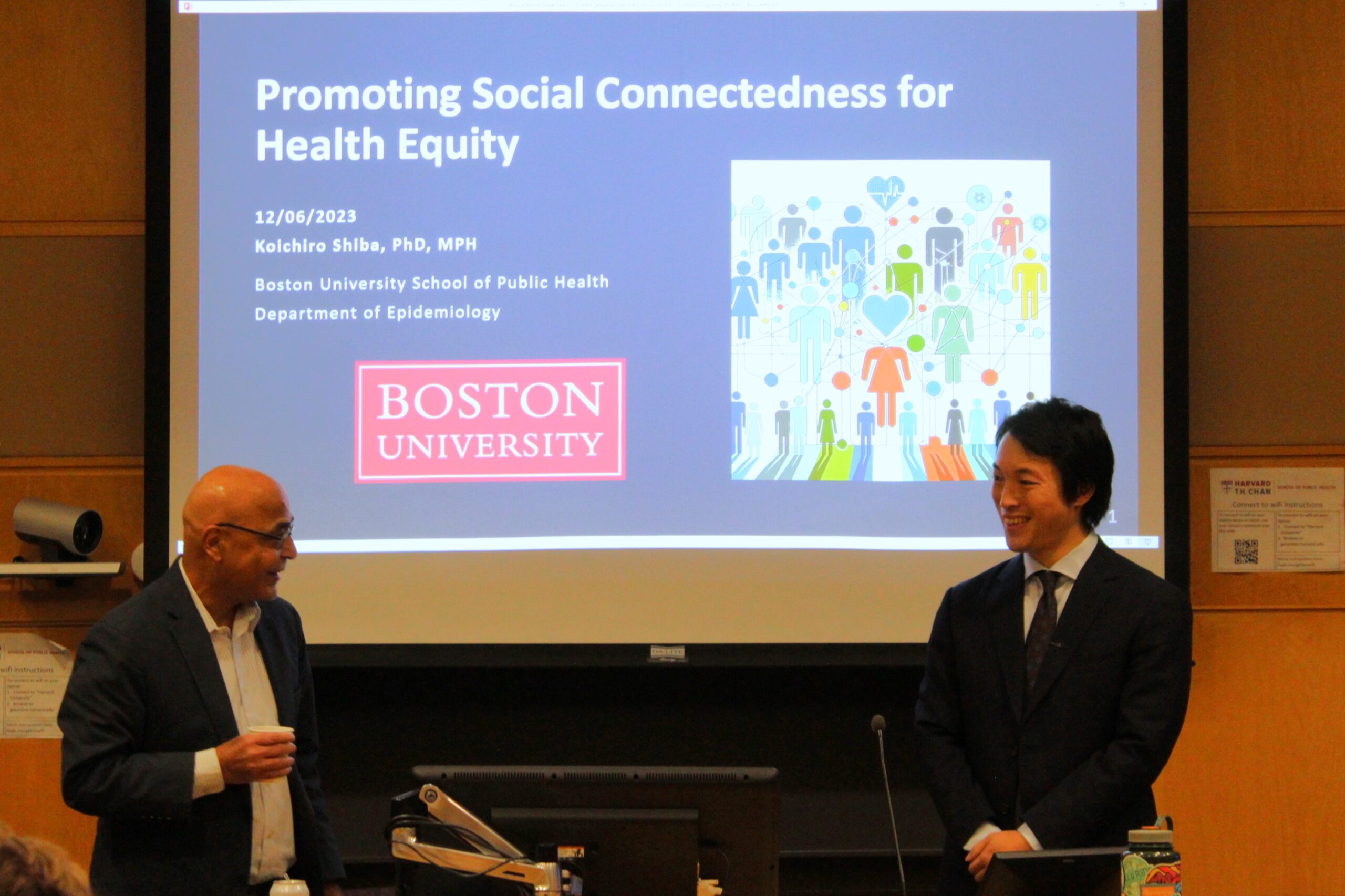
Dr. Shiba began by highlighting that the adverse effects of social isolation and loneliness are not limited solely to an individual level but also extend to the societal level. More disconnected societies often experience lower economic outcomes, decreased neighborhood safety levels, and reduced disaster preparedness and resilience, factors that can collectively influence public health during crises.
“Promoting social connectedness is not just about yourself being healthy when you’re connected,” argued Dr. Shiba. “It’s also about our society being better off with strong ties and integration. And that’s exactly why we should be promoting connectedness at the societal level.”
Transitioning to the discussion on health equity, Dr. Shiba underscored that the impact of social isolation is not uniform across all demographics. Research indicates that individuals from socially marginalized groups are more susceptible to social isolation and, consequently, are more prone to adverse mental and physical health outcomes. Dr. Shiba hypothesized that one possible cause for this disparity in the impact of social isolation could be that people from socially marginalized backgrounds tend to lack the resources that they need to cope with the psychological distress that can arise from being socially isolated.
Health inequity in the context of social isolation is the first issue Dr. Shiba tackles in his work. “If we don’t address this problem of social isolation,” he warned, “existing health disparities could increase.”
The Necessity of Methodological Change

The second issue Dr. Shiba’s work addresses is an issue with the “causal inference” technique most researchers use to assess population health effects.
The current approach to causal inference focuses on average treatment effects. Average treatment effects are calculated by comparing the average outcomes under two hypothetical scenarios: when everyone in the population is exposed (e.g., being socially isolated) and when nobody is exposed (e.g., not being socially isolated). It provides a summary of the overall effect across the entire population, often assuming that the effect is the same for all individuals.
However, this overlooks the implications of the exposure (e.g., social isolation) for disparities in health outcomes. Even if two exposures have the same average effect, their impact on health disparities can differ; one exposure could induce a broader spread in the health outcomes (i.e., wider health disparities) while the other exposure could lead to a narrower spread despite a similar change in the averages outcomes. Concentrating solely on averages can suggest interventions that inadvertently widen health disparities. This calls for a paradigm shift in causal inference research, challenging the belief that improving average health automatically reduces disparities.
“I think there is a huge gap there, methodologically speaking,” stated Dr. Shiba, “and we need a method to quantify the expected changes in health disparities as a result of new interventions.”
Dr. Shiba’s Simulation
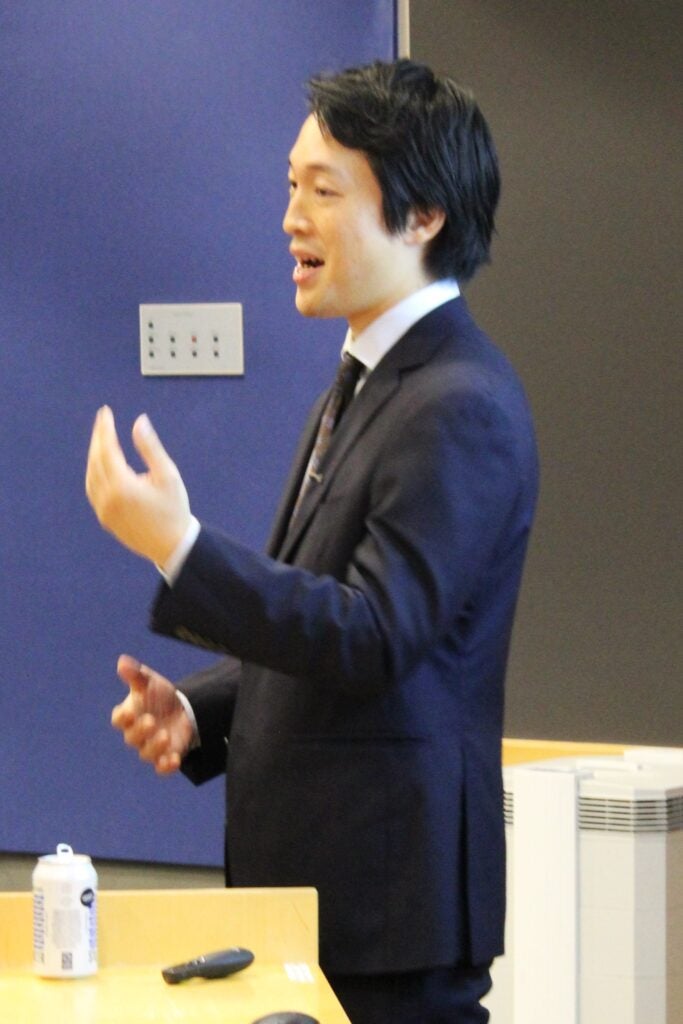 Dr. Shiba’s solution to this methodological issue was to develop new analytical framework which estimates expected changes in health disparities, not just overall population health changes. He tested this framework in his recent work using data on older adults from the US Health and Retirement Study. This work simulated changes in income-based disparities in cognitive functioning under hypothetical interventions addressing social isolation. The simulation asked the question “Would interventions to reduce social isolation also reduce disparities in cognitive function?”
Dr. Shiba’s solution to this methodological issue was to develop new analytical framework which estimates expected changes in health disparities, not just overall population health changes. He tested this framework in his recent work using data on older adults from the US Health and Retirement Study. This work simulated changes in income-based disparities in cognitive functioning under hypothetical interventions addressing social isolation. The simulation asked the question “Would interventions to reduce social isolation also reduce disparities in cognitive function?”
Findings from the study indicate that the answer was yes. Reducing social isolation appeared to reduce disparities in cognitive functioning among a sample of older adults in the US. However, this was only the case if the intervention specifically addressed the existing disparities in social isolation.
Overall, the data showed that on average, social isolation was associated with lower cognitive functioning. Upon closer analysis, Dr. Shiba found that the impact varied among different groups. Individuals who were female, African American, came from a lower socioeconomic status, or had pre-existing health issues tended to experience more adverse effects from social isolation.
For both isolation and cognitive functioning, Dr. Shiba’s simulation found evidence of an income-based disparity. As an individual’s income increased, they were less likely to be socially isolated and more likely to have higher cognitive functioning. Dr. Shiba theorized that the cause for this disparity could be that wealthier people may have more free time to connect with friends and family; and that they may have greater access to the resources needed to engage in intellectual activities, thereby maintaining their cognitive functioning.
Population-Level Interventions for Social Connection
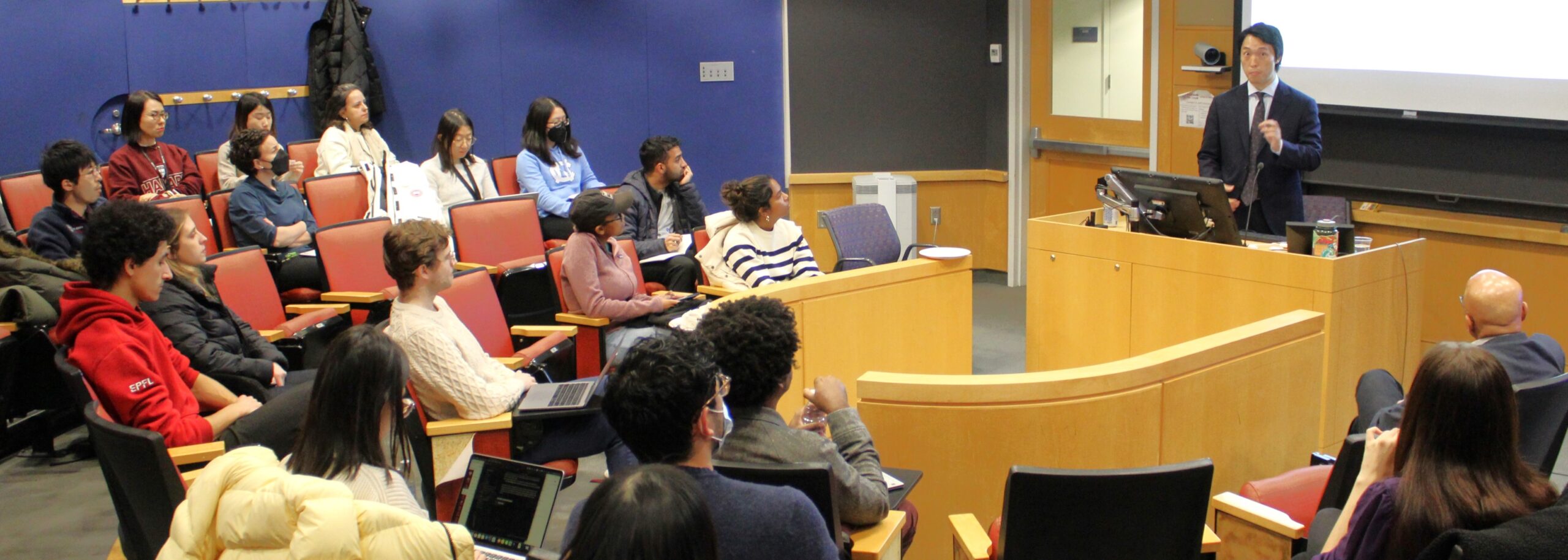
Dr. Shiba’s research considers the big picture, taking a societal rather than individual approach to the issue of social disconnectedness. He explained that if policymakers implemented an intervention that removed social isolation from the whole population, marginalized people would benefit more from the intervention than the rest of society. Therefore, Dr. Shiba argued, promoting social connectedness at the population level has the potential to reduce existing health disparities.
When considering the power of policymakers to address the issue of social isolation, Dr. Shiba contended that they need to recognize that social connectedness is a health-promoting factor and can influence many important societal outcomes. In terms of actions, he advised that policies be implemented to remove any structural barriers that keep people from connecting. “Policymakers should always consider how the policies they develop might influence social connection,” he argued, “and should actively promote social connection through these policies wherever possible.”
Dr. Shiba added that policymakers should attempt to shift the entire distribution of social connectedness in a society, rather than treating a limited number of isolated individuals. There are many ways to do this, and one promising intervention he discussed was the creation of community-based places. He gave the example of community gathering places built by local Japanese municipalities over the past decade to provide older adults with spaces for socialization, in order to promote healthy aging.
Dr. Shiba conducted a study on one such community gathering place in Japan, and found that involvement with the place and its activities appeared to promote social connectedness and improve some health outcomes among participants. Elaborating on the study’s outcome, Dr. Shiba explained that “the association between social connectedness and health isn’t just about loneliness and psychological distress. For example, connectedness can bring us a purpose in life, which can in turn influence our health. And in these community-based places in Japan, older adults sometimes interact with local children; and through these intergenerational interactions, some older adults gain a sense of purpose in life, which could influence their health outcomes.”
Dr. Shiba’s research at the intersection of social isolation, health disparities, and methodology has introduced new considerations to the study and prevention of social disconnectedness. By exploring the associations between social isolation, socio-economic status, and cognitive functioning, he has drawn attention to the health disparities present in our society. By developing an innovative new analytical framework, he has provided a tool which researchers can use to incorporate the consideration of health disparities into their work. And by advocating for a population-level focus in interventions and urging policymakers to view social connectedness as a fundamental health-promoting factor, Dr. Shiba has illuminated a clear path towards the promotion of health equity and social connection.
WATCH THE SEMINARWritten by Ayla Fudala, Center Communications Coordinator
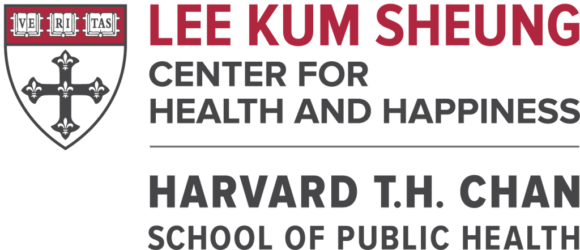
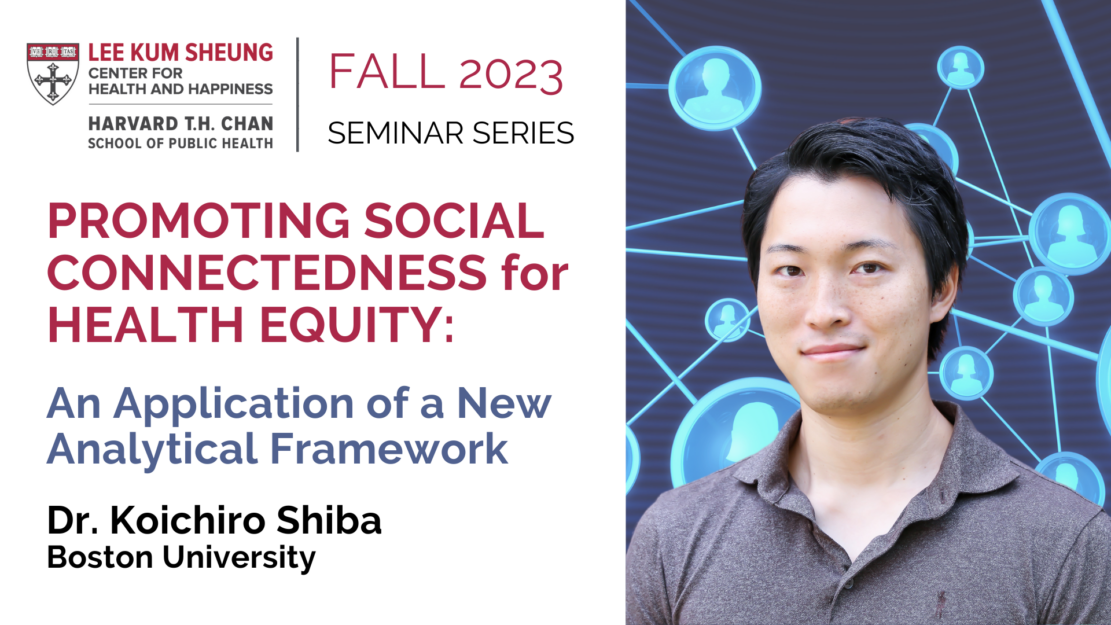
You must be logged in to post a comment.